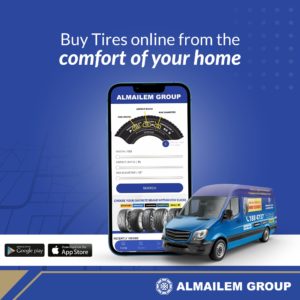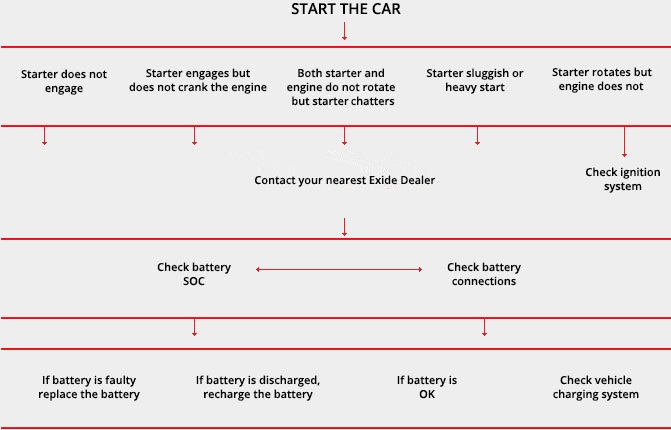Author: almailem_group
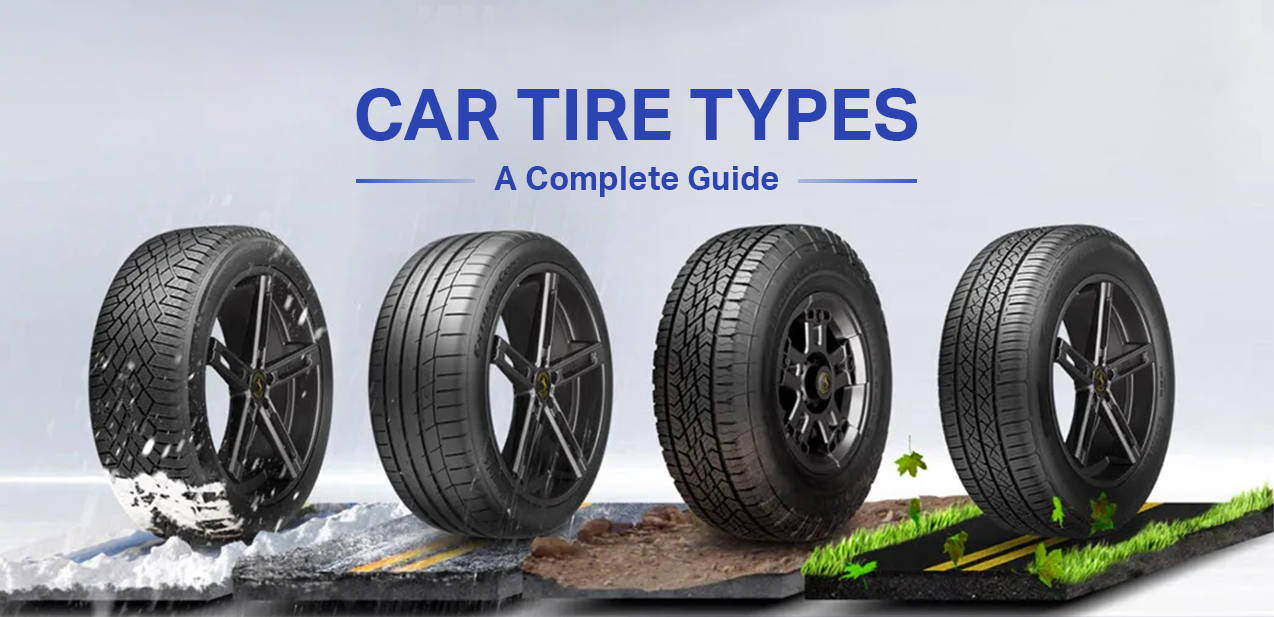
Types of Car Tyres and Their Use
Posted On03.08.2023Tires are the most important aspect of any vehicle, and choosing the right tires is more crucial than you might think. You have to choose the one that is suitable for the climate and terrain that are applicable to you. Tires come in a broad variety of styles and sizes to accommodate a wide range of vehicles and conditions. You may be confused about what to choose for your vehicle, but this article will help you precisely get the one that is best for your wheels.
Picking the right tire can be a daunting task, but it can affect your safety, performance, and fuel efficiency. A number of different tires are available, and each is suited to a specific type of driving condition and vehicle type. Here, you’ll learn about the different types of tires, what they’re good for, and the best way to use them. You’ll also see which vehicles are best for each type.
-
Winter Tires
As you can see, these tires are made to be used in very cold weather situations, such as snow, ice, and slush. They are made of a special kind of rubber that stays flexible even when the temperature is low. This gives them better grip and traction on roads that are wet or slippery.
There are winter tires with deeper tracks and different designs that help them stick to the road and move snow and slush away. They are perfect for drivers who live in areas with icy conditions because they help with control, steadiness, and safety. They are not appropriate for use in hot weather because they wear out quicker and provide less traction on dry roadways.
-
Summer Tires
Summer tires are designed for high speeds and warm weather conditions. They are made from a softer rubber compound, which provides enough support and grip to handle dry and wet conditions. They are inappropriate for use in frigid circumstances as they are not made to offer the grip and flexibility required in extremely low temperatures.
They offer high performance and are capable of coping with temperatures above 7 °C. The soft compound used to make these tyres makes them good for speed and agility. Summer tire treads are excellent at channelling water away and are thus resistant to aquaplaning.
Also check: How Does the Tire Tread Pattern Affect the Car Performance
-
All Season Tires
All-season tires are made to work well and last in a range of weather and road conditions. They are made of harder rubber than summer tires, which makes them last longer and more sturdy. They also have a unique tread design that gives them traction on both dry and wet roads.
All-season tires are a popular choice for drivers who want tires that can handle a wide range of driving situations, such as light snow and rain. They can be used all year in mild areas where winters are not too cold. But they might not work as well in extreme weather, and their grip and driving might not be as good as with tires that are made for specific circumstances.
-
Performance Tires
Performance tires are made for sports cars and other high-performance vehicles that go fast. They are made of softer rubber than all-season tires, so they grip and steer better when it’s dry or wet. They also have a unique tread design that makes them better at high speeds in terms of performance and control.
Performance tires are best for drivers who care more about speed, driving, and performance than about comfort and longevity. They are also a popular choice for track fans and drivers who want their cars to perform as well as possible. But they might not be good for use in cold weather, and they might not grip and steer as well as tires that are made for specific circumstances.
-
Run-Flat Tires
Run-flat tires, also referred to as self-supporting tires, are a specific kind of tire that can keep rolling even after losing air capacity. The reinforced sidewalls of these tires are made to sustain the weight of the car even when the tire is totally empty. Run-flat tires were initially created for military cars, but they have recently gained popularity among consumers.
The ability to continue travelling even after a puncture or other tire injury is one of the primary benefits of run-flat tires. Run-flat tires can also save drivers from having to wait for a lift vehicle or change a tire on the side of the road, both of which are inconvenient. But it’s important to know that run-flat tires may not be as comfortable or easy to drive on as standard tires, and they may be more expensive to replace.
Also Read: Tire Replacement: When and Why Should You Replace Tires?
-
Directional Tires
These tires are designed to rotate only in one direction, as indicated by an arrow on the tire sidewall. These tires are best for dispersing water that can accumulate in the front of the tire. The other advantages of directional tyres are that they are good for reducing road noise and improving directional stability. Drivers who value control and stability in inclement weather conditions can benefit from the outstanding performance and safety benefits offered by directional tires.
Why It’s Important to Choose Tires Carefully
Selecting the right kind of tire for your car is crucial for ensuring your protection, effectiveness, and efficiency while driving. There are four primary kinds of tires to consider -summer, winter, all-season, and performance – each with distinct features and advantages. The best tire to use will depend on various things, including your driving style, the weather, and the sort of vehicle you have. If you know about these things, you can make better decisions and improve your driving safety and performance.
MORE NEWS
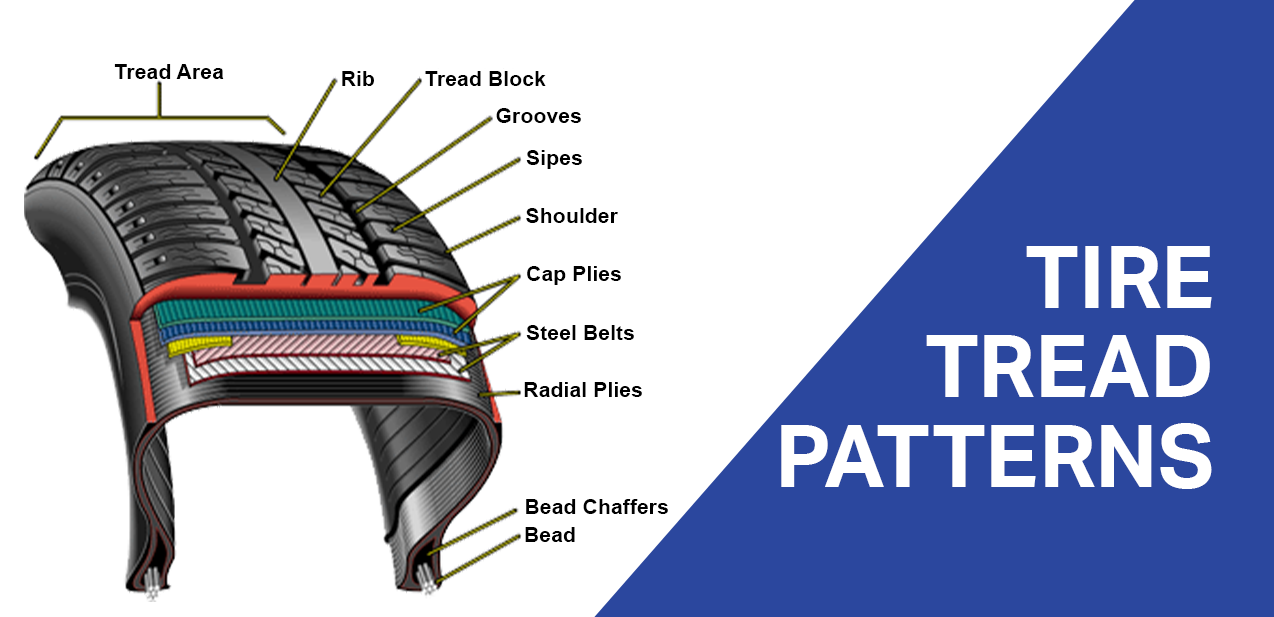
How Does the Tire Tread Pattern Affect the Car Performance
Posted On03.08.2023What is a tire tread pattern? Tire tread patterns are referred to as the rubber present on the circumference that comes in contact with the ground or road. It is designed in the form of grooves and ridges arranged in a pattern to provide grip and stability while travelling through wet, snowy, or muddy road conditions.
There are tires made specifically for each season, such as winter and summer, and tires suitable for any season. Are you confused about finding the right tire in the changing seasons? If that’s the case, this blog will let you know more about tire tread patterns and their applications.
Main Function of Tire Tread Patterns
As mentioned above, there are different tire treads, and each is designed for a specific purpose. Now, what is the need for different tire tread patterns? Or how can you benefit from different tire tread patterns?
Tire tread patterns are made on the circumference of tires to displace water on muddy roads. As a result, the tires can make contact with the ground, providing a smooth ride. A few benefits of tire tread patterns include the following:
-
Traction
Traction control systems are integrated into vehicles to detect any loss of tire grip on the road. And how do tire tread patterns aid in providing traction? Tire treads are primarily designed to provide traction on any road surface. The grooves and ridges of the tire treads displace water, mud, snow, and other materials that act as barriers against a smooth ride.
By increasing the area of contact between the tire and the track, tire tread patterns improve grip. This in turn reduces the risk of sliding on slippery surfaces, hydroplaning, skidding, and losing control.
-
Durability
Tire tread patterns also aid in improving the longevity of tires by ensuring equal weight distribution. Tire tread patterns made of hard rubber ensure the quality and durability of your vehicle’s tires. In addition, there are different tire tread patterns suitable for each type of road to evenly distribute weight and stress. Therefore, wear and tear on tires is greatly reduced, contributing to an extended warranty.
-
Noise Reduction
An effective tire tread pattern also contributes to providing a smooth and comfortable ride, which in turn greatly reduces noise and vibrations. It is the presence of mud, debris, and other things that make you uncomfortable and noisy. Tire tread patterns remove this uneasiness and provide a smooth ride, which disperses these barriers. Thus, tire pattern designs aid in noise reduction.
-
Easy Handling and Braking
Tire tread types are also great at handling by reducing the risk of sliding or hydroplaning and providing better stability. Tire pattern designs improve brake performance as well, thus saving you from major accidents. It ensures improved braking by providing grip and slowing down from a distance with ease.
Also check: Types of Car Tyres and Their Use
What are the Different Types of Tire Tread Patterns?
There are various tire tread patterns to choose from for smooth and comfortable long or short rides. These variants include:
Directional Tire Tread Pattern
Directional tyre tread patterns are made so that a vehicle can only move in one direction, as the name suggests. There are lateral grooves designed to meet in the center, which is then shaped like an arrowhead. And the V-shaped grooves at the end help prevent hydroplaning by letting water flow through the tread pattern more quickly.
This tire tread pattern also gives you more grip, which keeps you safe when driving on muddy or snowy roads. As a result, the tire pattern type is an all-rounder that is suitable for any season.
Asymmetrical Tire Tread Pattern
An asymmetrical tire tread pattern, as the name itself implies, is asymmetrical in appearance and has two different designs. One on the inner half and another on the outer half, giving it an unusual look while also serving a particular purpose.
Since the inner tread pushes the water away, it can be used to keep the car from hydroplaning. Whereas, the outer tread has rigid grooves and ridges to provide a higher grip while cornering. Owing to its elevated design and structure, the asymmetrical tread is a better choice for ultra-high-performance cars.
Symmetrical Tire Tread Pattern
Symmetrical tread pattern type is one of the most common tread patterns and is a perfect choice for normal, passenger cars. Therefore, this type of tire tread pattern is not at all suited for high-performance vehicles.
Unlike asymmetrical tire tread patterns, symmetrical tire tread patterns have the same tread type on the inner and outer parts. Owing to its superior design and structure, the tire tread pattern provides a smooth and comfortable ride with higher stability.
Using symmetrical tread in vehicles is good because it makes tyres last longer, uses less gas, and makes less noise. This tread pattern is perfect for dry roads because it provides a steady grip. It may, however, be ineffective in wet and muddy conditions.
Rib-shaped Tire Tread Pattern
Rib-shaped tire tread patterns come with rib-shaped tread on the tire circumference, and grooves are shaped in straight lines or in the form of S-shaped voids. For its high-end design, this tire tread type is perfect for hard surfaces such as concrete or tarmac.
The advantages of employing rib-shaped tread patterns include the following:
- It provides directional stability and complete control over the steering.
- Reduced rolling resistance, which in turn provides improved fuel efficiency.
- Rib-shaped tire patterns can be used for high-performance vehicles.
Lug-shaped Tire Tread Pattern
Lug-shaped tire tread is aligned in a series, with grooves parallel to each other. The lug-shaped grooves are arranged such that the ridges look perpendicular to the circumference of the tire.
The main benefit of this particular tire tread pattern is that it could provide higher traction and hence be used in drive axles of commercial vehicles such as 4×4 vehicles. Additional benefits of including lug-shaped tire tread patterns also include providing excellent grip while accelerating and braking.
Mixed Rib-Lug Tire Tread Pattern
This mixed tire pattern is symmetrical in appearance and has the combined features of both lug and rib-shaped tire tread patterns. Hence, the rib-lug tire pattern combines S-shaped voids and lug-shaped grooves in perpendicular directions.
Which type of vehicle gets the most out of rib-lug tire tread? This type is best suited for heavy-loaded vehicles such as trucks and buses on dirt and paved roads. Another advantage of rib-lug tire tread is that it provides balanced performance and better braking.
How to Choose the Right Tire Tread Pattern?
To ensure safety and comfort while travelling long distances, it is quite important to check the tires and make sure to upgrade them based on the road conditions. The following are some factors to consider when selecting a tire tread pattern:
- Look for the road conditions. You may check if the road is muddy, dry, or snowy. And choose tire tread that could easily displace ground debris.
- Choose a tire tread pattern based on the type of vehicle. Sports cars require one that has excellent handling and cornering capacities. However, passengers could greatly benefit from employing symmetric tire tread patterns.
- You may opt for a tire tread based on your driving style as well. Asymmetrical and directional tire treads are recommended for high performance.
- Ensure that you choose a trustworthy and reliable brand for safe and comfortable rides.
- Furthermore, you could also talk to an expert about how to choose the best tire tread for your vehicle.
AlMailem Tires: A Comprehensive Solution for All Vehicle Requirements
Are you on the lookout for a comprehensive solution for your vehicle? If so, AlMailem is your best bet for top-notch tire services anywhere, anytime. From exploring a wide range of tires from top brands to fitting and maintaining tires, AlMailem Tires has a team of experienced professionals to help you out. Drop by our offline store or give us a call to learn more about our services.
MORE NEWS
How to Keep Your Car Battery in Excellent Condition
Posted On03.08.2023Car batteries are the essential component of any vehicle, powering everything from the ignition to the headlights. It provides the necessary power to start a car’s engine and help run all its electrical components. When a driver turns the ignition key, the battery sends a burst of electrical energy to the starter motor, which then starts the engine. Once the engine is running, the alternator takes over and recharges the battery while also providing power to the car’s electrical system.
However, they are subject to wear and tear with time and, if not properly maintained, can result in failures and expensive replacements. Here are some tips and tactics for keeping your car batteries in good condition and ensuring that your vehicle runs efficiently for many years to come.
How to Know When to Replace Your Car Battery
Knowing when to replace your car battery is important to avoid being stranded on the road due to a dead battery. The lifespan of a car battery is usually 1 to 3 years, Depending on factors such as usage, weather conditions, and maintenance. However, there are several signs that can indicate when it’s time to replace your car battery.
Here are some general signs that indicate it’s time to replace your car battery:
- Difficulty when you start the car.
- If you find your battery swollen, then immediately replace it.
- Check whether the battery light on the dashboard is illuminated or not.
- If the battery is weak, the lights in your car will appear unusually dim.
- The devices, like GPS, radios, lights, and other electrical lights, will not work properly.
Tips to Make Your Car Battery Last Longer
A car battery is a crucial component of the electrical system, and maintenance is inevitable. Like all other batteries, car batteries also have a limited lifespan and can fail unexpectedly.
So it is important to follow some routine checks for the maintenance of a car battery. Here are some tips to improve the efficiency of your battery.
Turn All the Lights Off When You Get Out of the Car
This is one of the simple and important tips for saving the life of your battery. It is better to check whether the lights, radio, and other electrical systems are turned off while you leave the car.
Get a Clear Idea of the Parasitic Drain
Parasitic drain is a process that occurs when a car’s battery is slowly drained of its charge even when the vehicle is turned off. Parasitic drains in a car include the radio, clock, alarm system, and other electrical accessories that continue to draw power even when the car is not in use. Nowadays, premium cars with sophisticated computer systems and onboard technology can also contribute to parasitic drains.
Maintain the Battery in Extreme Temperatures
Extreme temperatures have a significant impact on the overall performance of your car’s battery. Both hot and cold temperatures can cause problems, with extreme heat often leading to battery failure and extreme cold making it more difficult for the battery to start the engine.
It is better to park the car under a shade or in a garage to protect the battery from extreme heat and keep it cool. In cold temperatures, warm up the engine for a few minutes before driving, and this will surely improve the efficiency of the battery.
Lock the Battery Mounts and Cables Properly
The battery should be fixed in place so that it is secure from short circuits, acid leakage, and misplacement. When you drive a car on a bumpy or rough road, the battery should be fixed properly so that you can avoid further car repair and maintenance. You should regularly check the cables and other parts of the battery.
Drive the Car for Long Trips
It is recommended to do a long drive once a week so that the alternator charges the battery after starting the car. Short drives cause excess wear and tear to the battery because of the lack of time for the alternator to allow the battery to charge. But if the need for a short drive arises, then the engine should run for 15 minutes before you end the trip.
Keep the Car Battery Clean
Keeping your car battery clean is an important aspect of maintaining the overall health of your vehicle. A dirty battery can lead to poor performance, a reduced lifespan, and even dangerous situations such as a potential fire hazard.
During a chemical reaction, Terminals in the batteries are covered with a white powdered substance as a byproduct. To keep your car battery clean, make sure to check the battery regularly for any signs of corrosion or buildup on the terminals.
Test the Battery Regularly
Are you looking for an oil change service on your car? then request a battery load test and a voltage check from your mechanic. And also you should test the battery on a regular basis by checking the efficiency of the light, GPS, radio, and other electrical substances.
Aware of the Warranty Period
Check the battery’s guarantee, particularly the free replacement term. If the battery fails before the warranty period expires, then you may be eligible for a refund.
Learn about the Coordination between the Battery and the Alternator
The battery is responsible for giving initial power to start the engine and other electrical parts of the system, while the alternator is responsible for recharging the battery when the engine is running. The alternator uses the rotational power of the engine to generate electricity, which is then sent to the battery for storage and also provides power to illuminate the headlights and radio.
If the alternator fails to recharge the battery properly, it can lead to a dead battery, which may lead to the complete failure of the electrical system. However, if the battery is weak or dead, the alternator will have to work harder to recharge it, which can cause strain on the alternator and potentially lead to its failure.
Expert Car Battery Services at AlMailem Garages
The performance of the car depends on the efficiency of the battery, so it is essential to keep up regular maintenance, including checking the battery’s charge level, cleaning the terminals, and tightening connections, which can go a long way in extending your battery’s life and preventing unexpected breakdowns.
MORE NEWS
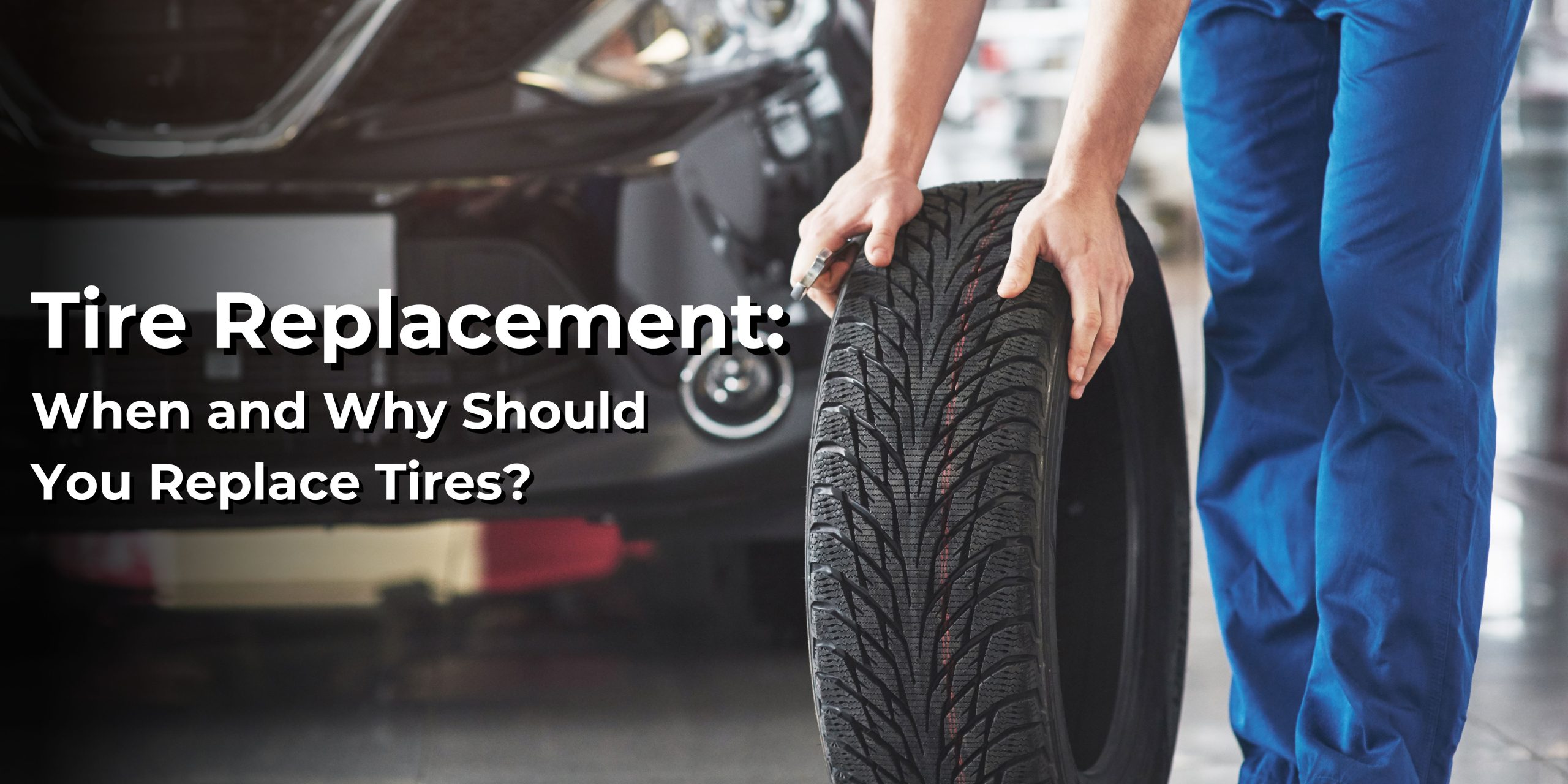
Tire Replacement: When and Why Should You Replace Tires?
Posted On03.08.2023Why should you replace tires at regular intervals? Because it provides the right grip and traction, letting you ride safely on any type of road. However, people often neglect the maintenance part and notice only when stuck in the middle of the road. To be a car enthusiast or one who does not do proper tire maintenance, one should be well aware of when and how often tires should be replaced.
Irregular maintenance of tires leads to thinning of the treads and, finally, a blowout or sketchy grip that could cause a serious accident. Based on several factors such as tire depth, tire age, tread wear, and the changing climate, tires should be changed often.
What Are the Factors to Consider When Replacing Tires?
When it comes to replacing tires, one ought to check certain factors to confirm that they are replacing tires at the right time and getting a perfect set that will last longer. Following are some of the factors to check for in old tires when replacing them:
-
Tire Tread Depth
Tire treads are ridges and grooves on the circumference of tires that make direct contact with the ground to offer a smooth and seamless ride. Based on how often you go for long rides and the types of roads, tire treads wear out in due time. The new tire depth depends on size, and category & varies from 7-18mm.
Over time and usage, this ratio could be reduced to 2/32nd of an inch, which is considered dangerous and risky. Hence, the first and foremost thing to check for when replacing tires is tread depth.
Tread depths can be measured in three simple ways, such as:
-
Tire Tread Gauges
Tire tread gauges are one of the cheaper tools that let you measure tire tread depth with great accuracy and precision. The tool will let you measure tread depth up to 30 seconds of an inch.
-
Tread Wear Indicators (TWI)
Tire wear indicators are mostly built into the tires, such that they are evenly spaced and raised on new tires. In time, tread depth will be reduced and reach the same height as these indicators, indicating that it’s time to replace your tires.
-
Tire Age
It is best advised to change tires within 5 years from the date of production.
Refer to our guide on car tire type
-
Excessive Vibration
Worn-out tires make tire surfaces uneven, reducing the smoothness of your ride. The result of these unevenly spaced grooves or ridges on the tire surface is excessive vibration. Excessive vibrations are one of the most significant signs that show it is high time to replace your tires.
-
Poor Handling or Traction
Tire treads directly come into contact with the ground, providing the right grip and traction while traveling across. Thinning of tire treads eventually affects the traction and hence causes poor handling, especially when riding through hillsides.
What Are the Consequences of Not Replacing Worn-Out Tires?
Are you still running on your old worn-out tires? Then it is high time to change them because worn-out tires could lead to serious accidents and tire blowouts. On experiencing the above-mentioned signs and factors, tires ought to be changed sooner.
The consequences of using these worn-out tires include:
- Reduced traction, and hence less comfort
- Worn-out tires increase stopping distance
- It eventually affects the fuel efficiency of your vehicle
- Aged tires are prone to blowouts, thus causing serious accidents
Overall, using worn-out or aged tires risks the overall safety of your vehicle and your life when going for a long or adventurous ride.
How to Ensure Your Vehicle’s Tires Last Longer?
To ensure a safe ride anywhere at any time, tires must be maintained and replaced whenever required. You can make use of the following tips;
- Have a monthly tire air pressure checkup.
- Ensure proper wheel balancing & alignment for your vehicle.
- Choose suitable tires for your vehicle.
- Have your tire rotated at 6000 km or 6 monthly intervals.
MORE NEWS
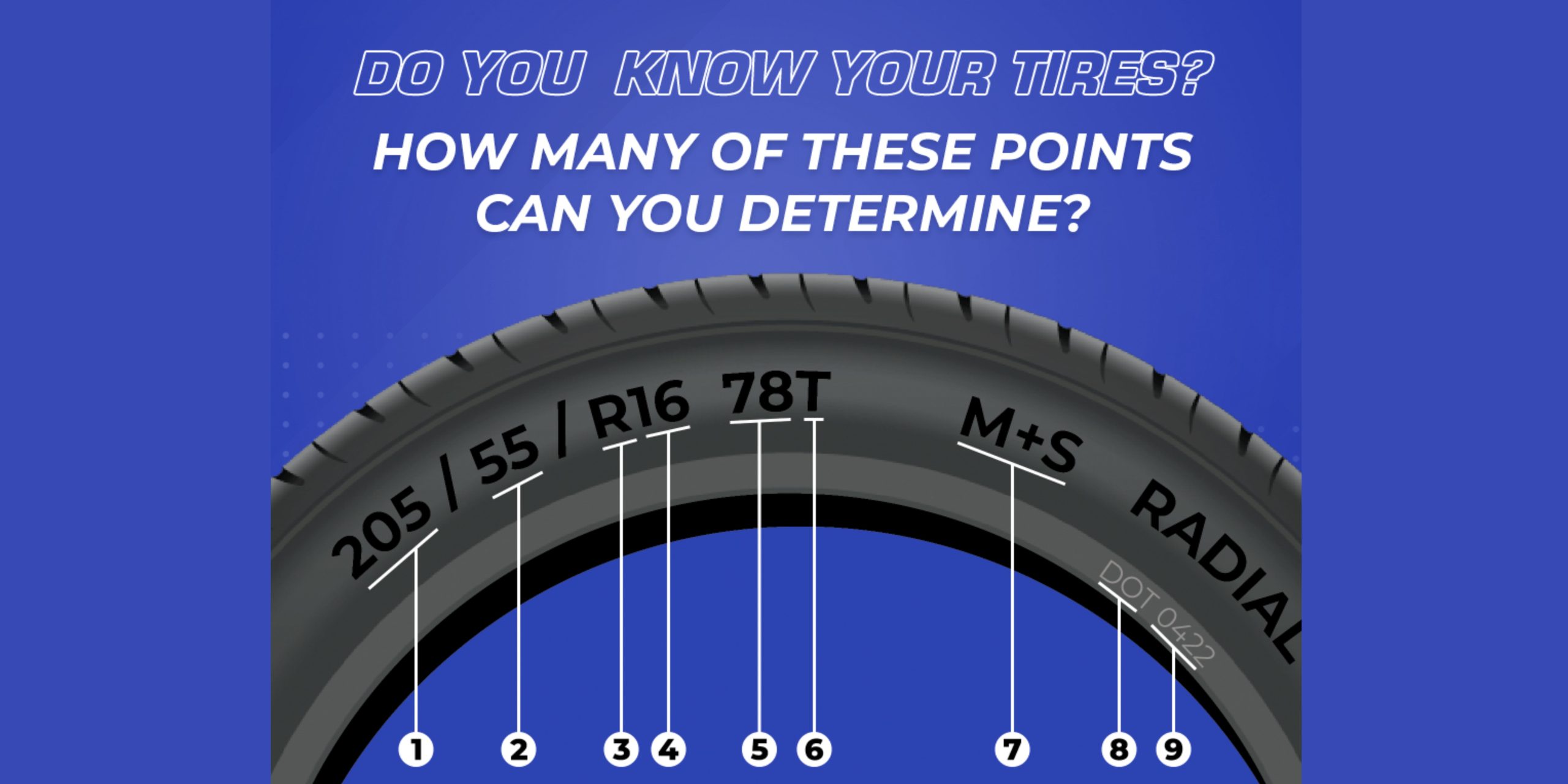
Decoding the Tire Markings: Everything You Need to Know
Posted On03.08.2023Have you ever noticed the markings on the tire? What exactly are the numbers on the tires? If you are planning to replace or buy a new tire for your car, then it is necessary to know the exact number and alphabet of the tire. For the average car owner, the markings and codes on tires can be overwhelming and quite ambiguous. We’ll break down the various markings and codes found on car tires and explain what they mean.
These tire labels include details on the tire’s dimensions, manufacturing date, specifications, and safety certifications. Every driver should understand these tire details on their car; this blog will provide you with a brief description of your tires. So let’s dive in and explore the world of car tire markings!
A Guide to Deciphering Car Tire Markings
If you’re in a workshop or outlet for new tires, it’s essential to have a good understanding of the product you’re buying. By decoding the markings on your tire’s sidewall, you can gain valuable insights into its size, age, speed rating, and load capacity.
Let’s have a closer look at car tire markings and help you understand what they mean so that you can choose the perfect set of tires for your vehicle.
Example: P 225/45 R 18 95 H
- P-Tires are designed for vehicles that carry people, like cars.
- Here 225 shows the width of the tire, and this is the first number started with tire markings.
- Here the aspect ratio is 45, which means the height of the tire is 45% of the width of the tire.
- Since the letter R is present in our example, the construction is radial.
- The next number is 18 in our reference and shows the diameter of the wheel rim.
- The next number, 95, indicates the load index of the tire.
- Here in our reference, it is H, which indicates a speed of 209 kph.
Application of the Tire: P or LT
As you are aware, tire sidewall markings have codes that start with letters and then include some numbers. P/Lt, where P means passenger and LT means light truck, shows the application of the tire.
- P-Tires are designed for vehicles that carry people, like cars.
- LT Tires are designed for vehicles that carry goods and cargo, like trucks.
This will be necessary in order to withstand the weight of the load on the tire.
Width of the Sidewall
The number after P/LT indicates the tire width in millimeters from one sidewall to another. This is called the nominal width of the tire.
Aspect Ratio of the Tire
The aspect ratio of the tires is shown in percentage. Tire markers get the aspect ratio by dividing the height of the rim by its width. A lower aspect ratio is better than a higher aspect ratio if you consider the performance.
The aspect ratio of the tire = Height of the rim/width of the rim.
Construction of the Tire
After the aspect ratio, the next is a letter, and it represents the type of construction of the inner part of the tire.
R is the letter in our example, so the construction is radial construction, which means the internal ply cords in the tire are oriented in the radial direction from one to the other and are at 90 degrees to the rotation.
If the letter comes as D, then it is diagonal construction, and if B, then bias-ply construction.
Also know about: Types of car tires
Diameter of the Tire Rim
It gives information on the diameter of the wheel rim of the tire in inches. This measurement is important because it determines the size of the tire that can be mounted on the rim, and therefore affects the overall size and performance of the vehicle
The Load Index of the Tire
The next number indicates the load index, and here it is 95. This code indicates the maximum load that a tire can hold when it is fully inflated.
This normally ranges from 75 to 105, indicating the unique capacity of the load that a vehicle can support. This is also available on the load index chart in your car.
Speed Rating for the Car
The letters from A to Z, followed by the load index, indicate the speed rating. Each letter shows the maximum speed a tire can maintain under the allowed load capacity.
Even though a tire can have a specific speed index, you have to follow the rules of the speed limit for your safety.
Inflation Pressure
Maximum inflation pressure is the highest amount of air pressure that can be safely used to inflate a car tire, whereas cold inflation pressure is when the vehicle is in an idle position.
This can be expressed in PSI, and underinflation leads to a car accident, so it should be better to follow the maximum inflation pressure recommended on the tire.
Treadwear Number and Grooves
A high tread number is one of the key requirements for a tire. As you are aware, tires will eventually wear out, so choose a tire with a high tread number that unquestionably has more grip and will be long-lasting. Tires are made up of a pattern called grooves that help them gain traction on slippery roads.
Traction Grade for Your Tire
Based on how they behaved on the slippery road, the tires’ varied traction grades are AA, A, B, or C. This rating is important because it can affect your vehicle’s brake service and overall safety in wet conditions.
When you hit the brake and the car stops in the rain, there will be a delay between these actions. This may increase the risk of accidents or collisions due to inadequate braking performance.In order to avoid this, choose a tire with sufficient thread and a better traction grade. The tire would have better traction on the ground if it had more tread. The traction grade describes how far the tires travel on a slippery road before breaking.
You can read more about tyre tread patterns
Tire Grade in Various Temperatures
The temperature rating on a tire indicates how much heat it can endure. The type “A” tire can endure higher heat than other types of tires without breaking.
Rotation of the Tire
It indicates the direction of the rotation of the tire as symmetric or asymmetric. The rotation direction of the tire is indicated by an arrow or some other symbol on the sidewall. This symbol indicates the direction in which the tire should rotate when installed on the vehicle. Some tire models may also have additional markings to indicate which side of the tire should face outward.
The Manufacturing Date (DOT)
The production date is the only aspect of the tire that the average person can comprehend. The sidewall also displays the week and year of the tire’s manufacture, which gives you an indication of its validity before you buy.
If it’s 36/2020, the tire will be produced during the 36th week of 2020. The name of the manufacturing company is also marked on the majority of the tire’s sidewall.
If you are planning to buy tires in UAE, AlMailem Tires offers various tires for diverse applications like passenger cars, sports cars, commercial vehicles, etc. We are one of the largest tire retail network in UAE, where you can buy the best tires from top brands.
MORE NEWS
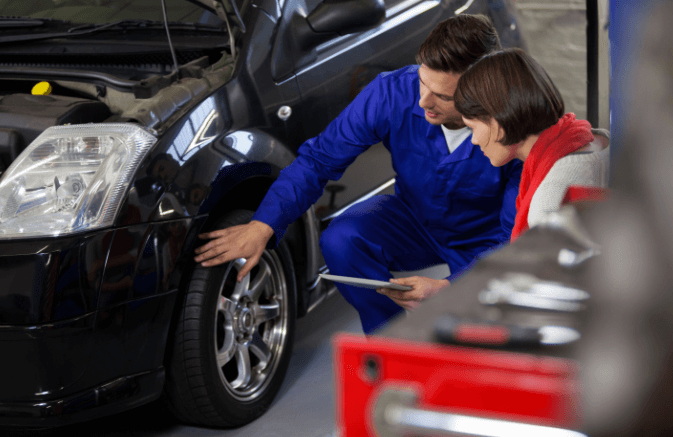
Types of Tires by Structure
Posted On13.05.2020To make your travel more enjoyable tires are categorized by vehicle type, structure, season, pattern, and various other special uses.
Bias Tire
Bias tires are used primarily for off-the-road, agricultural, and industrial vehicles.
Structure of a bias tire

The carcass of a bias tire has cords that alternate with one ply each in a crisscross angle formation. Thus, the angle of the alternating cords against the road surface is approximately 40 degrees on the circumference. Both carcass and belts are made out of nylon.
Deformation of tread during driving

Loads on tire or cornering while driving causes a deformation of tread, which makes heat-generation and uneven wear. However, bias tires have demands on Off-the-Road condition and Heavy vehicles.
Radial Tire
Radial tires are produced for passenger cars, light trucks, trucks, and buses.
Structure of a radial tire

The radial tire refers to a tire in which the cords are arranged perpendicular to its circumference. Due to this cord arrangement, the radial tire has a lower flatness ratio than the bias tire. Also due to its high horizontal resistance, the radial tire has superior starting, acceleration, controllability, rotationality and safety characteristics and is best suited for high-speed travel. Both carcass and belts are made out of steel.
Change in tire tread while driving

Despite changes in radial tire tread while driving, you will notice no change in the contact area between tread and road surface. The radial tire is often used for passenger cars. Its advantages are high rigidity of tread which makes cornering be stable and low rolling resistance.
Source: Hankook
MORE NEWS
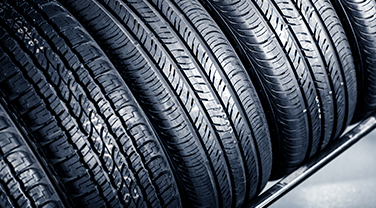
Passenger Tire Terminology
Posted On13.05.2020The selection criteria for tires change depending on the type of vehicle you own and your style of driving. Learn more about the terminology and meanings of various parts of a passenger tire!
Tire Section Width
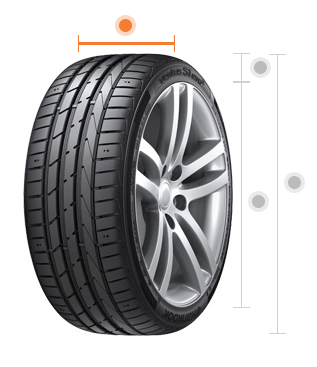
205/75 ZR15
Tire Section Width = Distance (mm) in a straight line between the sidewalls fitting to rim with standards air pressure and without loads.
Tire Section Height
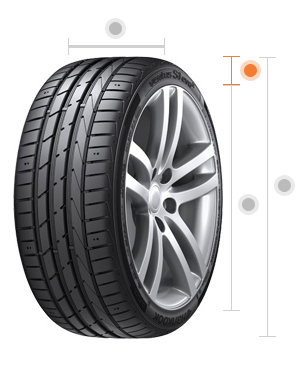
Tire Section Height = Half of a distance which is the difference between tire’s outer diameter and rim diameter.
Aspect Ratio
205/75 ZR15
The ratio of Section Height to Section Width.
* Aspect Ratio = (Section Height) / (Section Width) X 100
Rim Diameter
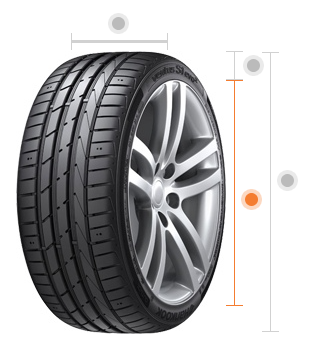
205/75 ZR 15
The distance (inch) between the rim bases in contact with the rim flange (almost identical to the tire’s interior diameter).
Tire Overall Diameter
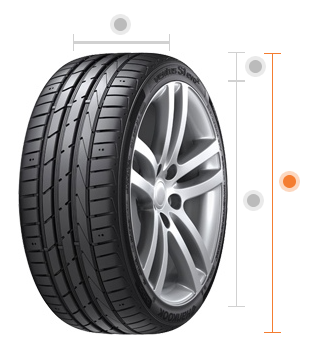
The outer diameter of tire fitting to rim with standards air pressure and without loads.
Source: Hankook
MORE NEWS
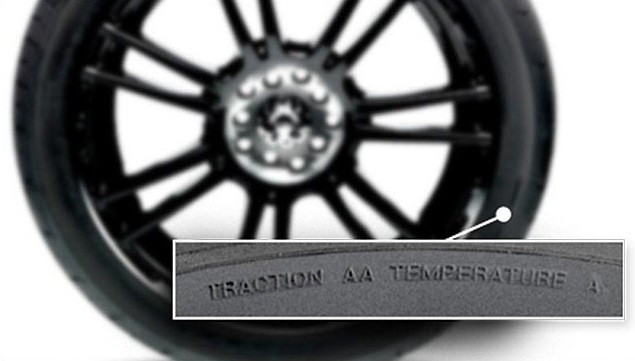
Tires-Reading a Sidewall
Posted On13.05.2020Treadwear, Traction, and Temperature Grades

Uniform Tire Quality Grading
The Uniform Tire Quality Grading System, or UTQG, is a system developed by the government designed to provide consumers with information on tire treadwear, traction, and operating temperature resistance.
Treadwear Rating
The treadwear grade is a comparative numerical rating based on the wear rate of the tire when tested under controlled conditions on a specified government test course. For example, a tire graded 200 would wear two times as well on the course as a tire graded 100. The relative performance of a tire depends upon the actual conditions of its use which may depart significantly from the test conditions due to variations in driving habits, service practices, and differences in road characteristics and climates.
Traction Rating
The UTQG Traction Rating indicates the tire’s ability to stop a vehicle moving straight forward on wet pavement. The ratings are AA, A, B, and C, with AA being the best.
Temperature Rating
The UTQG Temperature Rating indicates the tire’s ability to effectively dissipate heat. The ratings range from A to C, with A being the best.
*(UTQG treadwear goes in 20 point increments)
Air Pressure
With the right amount of air pressure, your tires will perform better, wear longer and save fuel. The “right amount” of air pressure for the original equipment or same size tires is specified by the vehicle manufacturer and may be different for front and rear tires. Check with your Nitto dealer if the replacement tires on your vehicle are no longer the same size as the O.E. tires.
U.S DOT Standard Saftey Code

The letters “DOT” certify compliance with all safety standards established by the U.S. Department of Transportation (DOT). This is followed by a combination of up to 12 numbers and letters.
The first two numbers or letters are the plant code where the tire was manufactured, and the last three to four numbers represent the week and year the tire was built.
Tires built in the 1990’s will have three numbers and may have a triangle to note the decade. Examples are below.
Note: Recently it became mandatory to apply a partial DOT serial number on the sidewall opposite the complete DOT serial number. The partial DOT serial does not show the week and year that the tire was manufactured, but may still assist consumers in identifying tires should a recall be necessary. The purpose in applying the partial DOT serial number was to facilitate tire identification when the full DOT serial number may have been mounted towards the inboard side of the vehicle, and consequently not visible unless the vehicle was put on a lift for inspection.
Tire Size, Load Index, and Speed Symbol

The sidewall of a tire includes a variety of important information. The numbers and letters identify dimensions and performance standards that allow you to compare tires more accurately and efficiently. This diagram will help you to understand those numbers and letters. For assistance in selecting a replacement tire, always consult your Nitto Tire dealer.
Section Width

The width of a tire is referred to as its section width. This is the width of an inflated tire in millimeters at its widest point from sidewall to sidewall.
Section Height
The section height of the tire is measured in millimeters also. The section height is approximately the distance from the rim to the tread surface of the tire when it is not carrying any weight.
Aspect Ratio
The aspect ratio is the dimensional relationship of the section height to the section width. The lower the aspect ratio, the shorter the sidewall and the wider the shoulder-to-shoulder width.
Radial
The “R” stands for “radial,” indicating the tire has radial construction.
This One is Easy!

The “20” indicates the diameter of the wheel in inches. You can learn more about changing the diameter of the wheels of your car in the Plus Sizing section.
Load Index

The load index number and speed symbol correspond to the maximum load-carrying capacity of the tire and its maximum speed capability.
The load index is an assigned number that corresponds with the load-carrying capacity of the tire. For example, “96” indicates a load-carrying capacity of 1565 lb at maximum inflation pressure. The load index for most passenger car tires ranges from 75-100. Click here to view the complete load inflation index.
Speed Symbol

Speed ratings are determined by indoor laboratory testing methods, which measure high-speed tire durability under controlled test conditions. These test procedures do not take into account underinflation, tire damage, vehicle characteristics or road conditions which can lead to sudden tire failure or loss of vehicle control at much lower speeds than indicated by the tire’s speed rating.
Speed ratings are determined by indoor laboratory testing methods, which measure high-speed tire durability under controlled test conditions. These test procedures do not take into account underinflation, tire damage, vehicle characteristics or road conditions which can lead to sudden tire failure or loss of vehicle control at much lower speeds than indicated by the tire’s speed rating.
Light Truck Tires

The “LT” designation stands for “Light Truck.” These tires are intended for more severe use often seen on trucks and follow load and inflation standards established by the Tire and Rim Association (TRA). Load Index values and load capacities for these tires can be found in TRA manuals.
About Air Pressure

With the right amount of air pressure, your tires will perform better, wear longer and save fuel. The “right amount” of air pressure for the original equipment or same size tires is specified by the vehicle manufacturer and may be different for front and rear tires. Check with your Nitto dealer if the replacement tires on your vehicle are no longer the same size as the O.E. tires.
Mud and Snow Designation

The “M+S” indicates the tire is designed for mud and snow applications. The Mud and Snow designation may also appear as “M&S” or “M/S.”
Source: Nitto
MORE NEWS

How to Jump Start a Vehicle
Posted On13.05.2020Vehicle Jump-Starting procedures as listed below should be followed carefully :
- Ensure that vehicle battery and battery for jump-starting have the same declared voltage (say 12V).
- Turn off all electrical loads, check vehicles – no part should be touching each other and gear should be in neutral position.
- Vehicles should have the same terminal earthed, if not,refer to manufacturers’ instructions. Make sure
that cables are not frayed or damaged.
Carry out the following steps in sequence:
- Connect the positive terminal of jump-starting battery to the positive terminal of the stalled car battery – on negative grounded system.
- Connect one end of the other cable to the negative (-) terminal of the booster battery.
- Connect the other cable away from the battery, to the engine block or car frame of the vehicle to be started.
- Make sure cables are away from fan blades and other moving vehicle parts.
- After starting, remove cables in reverse order, starting with one connected to engine block or car frame.
- If vehicle does not start within 30 seconds, call an auto electrician.
What to do when you face a starting problem?
- When the car engine turns well but does not start? Check the engine, carburettor, ignition system etc.
- The engine itself does not turn or turns very slowly? If the weather is cold, the engine may take the time to warm up. Be sure to check the grade of oil once. Or else, check your battery connection – in case of any problem, contact your nearest Exide dealer or Bat Mobile Service. Replace your vehicle battery, if it is faulty or recharge if it is low on charge and check fan belt and alternator output. Don’t forget to test operating conditions. However, if battery function is smooth, check the starter motor and its connections.
MORE NEWS

Road Trip Essentials for Your Vehicle
Posted On13.05.2020When planning a road trip, it’s essential to first think of what preventive steps you can take to ensure your vehicle is ready for the long haul. Many precautionary steps, such as checking tire pressure and tread, fluid and oil levels, wiper blades, belts and headlights, can be done at home at little-to-no cost.
However, if you’d like your vehicle checked by an experienced professional before your trip, consider stopping by a local Goodyear Auto Service for a 29-Point Inspection, which includes checks on tires, fluids, brakes and an under-the-hood inspection. If you experience a flat tire on your road trip, Goodyear Auto Service also offers Free Flat Repair nationwide –if you’ve got a tire that’s flat, punctured or losing pressure, our technicians will repair your tire for free as long as the tire doesn’t need to be replaced.
In case it’s too late for extensive preventive maintenance and you’re just in need of quick tips to get your car road-trip ready, consider taking it to the car wash for a deep clean, topping off necessary fluids, checking and changing the oil, if needed, and making sure tire treads and pressure are still in good shape. Other steps include:

Keep tires inflated, but do so properly. As temperatures rise during the summer, so can your tire pressure. Tires with high or low air pressure perform inefficiently compared to properly inflated tires. Check your tires before and after a summer road trip, using the inflation recommendations typically found in the driver side door frame or in your vehicle owner’s manual as a guide. To properly check tire inflation pressure make sure the tires are cold, meaning they’ve been idled in a shaded area for at least three hours. Never “bleed” or reduce inflation pressure when the tires are hot, as this can result in an under-inflated condition when the tires cool. Learn more about How to Inflate Tires and the importance of proper tire pressure.

Don’t overlook tread depth. Maintaining proper tire tread depth is an easy way to help maximize safety and performance. There are several ways to check tread depth, including the “penny test.” Simply insert a penny into your tire’s tread groove with Lincoln’s head upside down, facing you. If you can see all of Lincoln’s head, it’s time to replace your tires.

Test or replace the battery. Battery failure is the No. 1 cause of car breakdowns. Often, batteries give slight warning signs when they run low. For example, you may notice the engine struggling to turn over upon ignition or some of your dashboard warning lights staying on. While a typical battery life is about four-and-a-half years, each day of extreme weather – both hot and cold – contributes to the shortening of a battery’s life. It’s a good idea to have your battery tested by a trained professional during peak seasons to determine whether it’s time for a replacement.

Check critical fluids. Don’t get caught without improper levels of windshield, brake, power steering or transmission fluid for a long summer road trip.
If you notice more concerning issues, such as grinding and overheating, take your car into a local shop to have it inspected by a professional.
